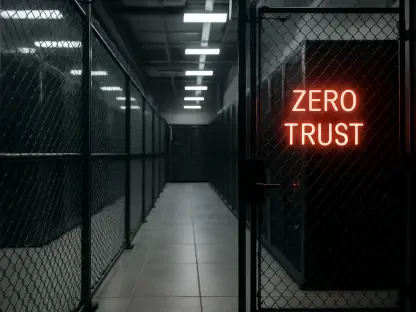Matilda Bailey is a Networking specialist who focuses on the latest technologies and trends in cellular, wireless, and next-gen solutions. Known for her profound understanding of cybersecurity infrastructure, she offers valuable insights into responding to the evolving and increasingly sophisticated threat landscape, making her one of the most sought-after experts in the field. Today, she shares her expert opinions on adaptive security measures, addressing vulnerabilities, tackling insider threats, leveraging AI for improved efficiency, securing AI implementations, and protecting cloud credentials.
How has the threat landscape evolved recently, and what factors are driving these changes?
The threat landscape has evolved significantly due to a number of factors. There’s an increasing number of cybercriminal actors, each more sophisticated than the last. Geopolitical tensions have resulted in a spike in malicious nation-state activities, targeting various sectors indiscriminately. New cybersecurity and data protection regulations, while essential, have also created a complex environment for security teams to navigate. Furthermore, rapid developments in new technologies, particularly AI, present both opportunities and challenges. All these elements combined have altered the approach needed to ensure security in this dynamic and high-risk environment.
Why do you think traditional security approaches are no longer sufficient in today’s environment?
Traditional security approaches often relied on static defenses and predefined rules, which are not as effective against modern threats. Today’s cyberattacks are highly adaptive and can easily circumvent such defenses. Attackers utilize advanced techniques to exploit vulnerabilities and avoid detection, necessitating more dynamic and responsive security strategies. Security now requires continuous monitoring, real-time threat intelligence, and adaptive measures to keep pace with the evolving attack vectors.
Can you describe the specific adjustments that security teams need to make in response to these changes?
Security teams need to embrace a more holistic and proactive approach. This includes enhancing visibility across the entire technology stack, prioritizing zero days, and improving detection capabilities for lateral movements within the network. Identity and access management systems must be robust to prevent unauthorized access. Teams should adopt advanced anomaly detection methods and leverage partnerships with cybersecurity specialists for rapid threat assessments when new vulnerabilities are discovered.
What do you mean by the “visibility gap” in an organization’s security infrastructure?
The visibility gap refers to areas within an organization’s network that are not adequately monitored or protected by common security tools like EDR. Devices such as firewalls, virtualization platforms, and VPN solutions often fall into this category. These blind spots present a significant risk as they can be exploited by threat actors to gain unauthorized access and move laterally across the network without detection.
Which devices are commonly targeted by threat actors due to this visibility gap?
Threat actors often target network and edge devices that are crucial for connectivity but may not support extensive security monitoring tools. Examples include firewalls and VPN solutions. These devices are integral to the network infrastructure but may lack the visibility and protection measures needed to prevent sophisticated attacks.
How can organizations detect lateral movement following the compromise of these devices?
Organizations can detect lateral movement by closely monitoring user behavior and network traffic for anomalies. If credentials are used in unusual ways or if there is unexpected access to sensitive areas, these could be signs of lateral movement. Implementing detailed logging and real-time anomaly detection systems, along with comprehensive identity and access management protocols, can help in identifying and mitigating such movements promptly.
What role does identity and access management play in securing these areas?
Identity and access management (IAM) is critical in securing vulnerable areas by ensuring that only authorized users can access specific resources within an organization. Effective IAM systems can restrict access to sensitive data and systems, enforce strong authentication mechanisms, and detect unauthorized access attempts. By controlling and monitoring access permissions, organizations can significantly reduce the risk of exploitation and unauthorized lateral movement within the network.
Can you explain the North Korean fake IT worker program and its implications?
The North Korean fake IT worker program involves actors from North Korea masquerading as legitimate IT workers to gain employment in various organizations. Once hired, these fake personas use their access to steal sensitive data, generate revenue for the regime, and sometimes extort their former employers. This method extends beyond a cybersecurity issue and requires attention across organizational departments, demanding stringent hiring practices and comprehensive internal security measures.
How should organizations develop strategies to combat insider threats like this one?
Organizations should develop multi-faceted approaches to combat insider threats. This includes enhancing hiring practices with rigorous background checks and conducting in-person interviews where feasible. Implementing robust identity and access management systems to restrict access rights, monitoring user activity, and fostering a culture of security awareness across all departments are crucial. Collaborating with external cybersecurity experts for specialized threat assessments can also be beneficial.
What role do HR practices and policies play in alleviating these types of threats?
HR practices and policies play a pivotal role in addressing insider threats by ensuring that hiring processes are thorough and reliable. Conducting detailed background checks, verifying credentials, and prioritizing in-person interviews can help mitigate the risk of employing malicious actors. Additionally, HR departments should work closely with cybersecurity teams to enforce strict identity and access management protocols and promote an organizational culture that prioritizes security.
How important is it to have rigorous background checks and conducting in-person interviews?
Rigorous background checks and in-person interviews are essential to verify the identities and backgrounds of potential employees. These practices help identify any discrepancies or red flags that might indicate a threat. By thoroughly vetting candidates, organizations can prevent malicious actors from infiltrating their systems, protecting sensitive data and maintaining overall security integrity.
How are AI solutions, such as the alert triage agent, transforming the workload of cybersecurity professionals?
AI solutions like the alert triage agent are revolutionizing cybersecurity by automating the analysis and investigation of security alerts. This reduces the workload of cybersecurity professionals, allowing them to focus on more complex and sophisticated threats. AI can quickly identify and prioritize alerts, filter out false positives, and provide actionable insights, significantly enhancing the efficiency and effectiveness of security operations.
How does automation help SOC teams focus on more sophisticated threats?
Automation helps SOC teams by handling routine tasks such as analyzing and triaging alerts. This frees up time for security analysts to focus on high-fidelity, true positives and more complex threats that require human expertise. With automation managing the bulk of the busy work, SOC teams can dedicate their resources to detecting, analyzing, and responding to sophisticated attacks, thereby improving overall threat management capabilities.
Can you discuss any specific AI tools Lloyds Banking Group is using to enhance their security operations?
Lloyds Banking Group has integrated several AI tools into their security operations, such as alert triage agents. These tools assist in rapidly analyzing security alerts, identifying false positives, and prioritizing real threats. By leveraging AI, the group can streamline their security processes, allowing their SOC teams to concentrate on the most pressing and sophisticated threats, ultimately enhancing their overall cybersecurity posture.
What are the primary data security challenges associated with the rapid deployment of AI tools?
The rapid deployment of AI tools often leads to significant data security challenges, primarily due to the uncontrolled input of data into AI systems. Traditional governance strategies may fall short, and there’s an increased risk of misconfigurations and data breaches. Furthermore, managing unstructured data such as images and texts poses additional risks, as these are not typically covered by traditional security measures, necessitating new approaches to data governance.
Why do traditional data governance strategies fall short when AI services are introduced?
Traditional data governance strategies often fail to account for the dynamic and complex nature of AI services. AI systems require large amounts of data, often unstructured, which existing governance frameworks aren’t equipped to handle effectively. Furthermore, AI can introduce new vulnerabilities, such as data leakage or unauthorized access, which traditional methods may not address adequately. This calls for updated governance strategies that cater specifically to the nuances of AI applications.
How can organizations manage the risks associated with using unstructured data in AI?
Organizations can mitigate risks by implementing robust data classification and sensitivity labeling systems for unstructured data. Establishing comprehensive data management protocols, ensuring secure data input and storage, and leveraging advanced AI tools that provide risk assessments and monitoring can help. Regular audits and compliance checks are also crucial to managing these risks effectively.
What steps should be taken to establish a single access layer for data in an organization?
Creating a single access layer involves centralizing data access controls and protocols. Organizations should integrate data management systems that provide unified access points, enforce strong authentication methods, and implement stringent access permissions. Regular monitoring, auditing, and updating of access controls are essential to ensure security and compliance. Collaboration between IT and cybersecurity teams is also vital to maintain a cohesive and secure data access structure.
How does Google’s AI Agent Marketplace ensure the safe usage of AI?
Google’s AI Agent Marketplace ensures safe AI usage by providing pre-vetted AI agents with classification on their security posture. The marketplace allows customers to browse and purchase AI tools that have undergone rigorous safety evaluations, ensuring they meet high security standards. This helps organizations deploy AI solutions confidently, knowing they have been assessed for potential risks and align with best practices for safeguarding data.
What are the primary methods used by threat actors to steal credentials in the cloud environment?
Threat actors employ various methods to steal credentials in the cloud, including deploying infostealers—malware designed to harvest credentials. They also exploit compromised on-premises environments to move laterally into the cloud. Basic but effective practices, like reusing passwords across different platforms and inadequate multifactor authentication (MFA), further aid these attackers. To mitigate these risks, organizations must implement robust authentication protocols and maintain comprehensive visibility over their cloud footprint.
Do you have any advice for our readers?
Stay vigilant and continuously update your security practices to adapt to the evolving threat landscape. Invest in advanced technologies and AI solutions to enhance efficiency and effectiveness, but also ensure robust data governance and access control measures. Educate your employees about cybersecurity risks and foster a proactive culture that prioritizes security across all departments. Always conduct thorough background checks and maintain strong identity and access management protocols to safeguard your organization against both external and internal threats.









